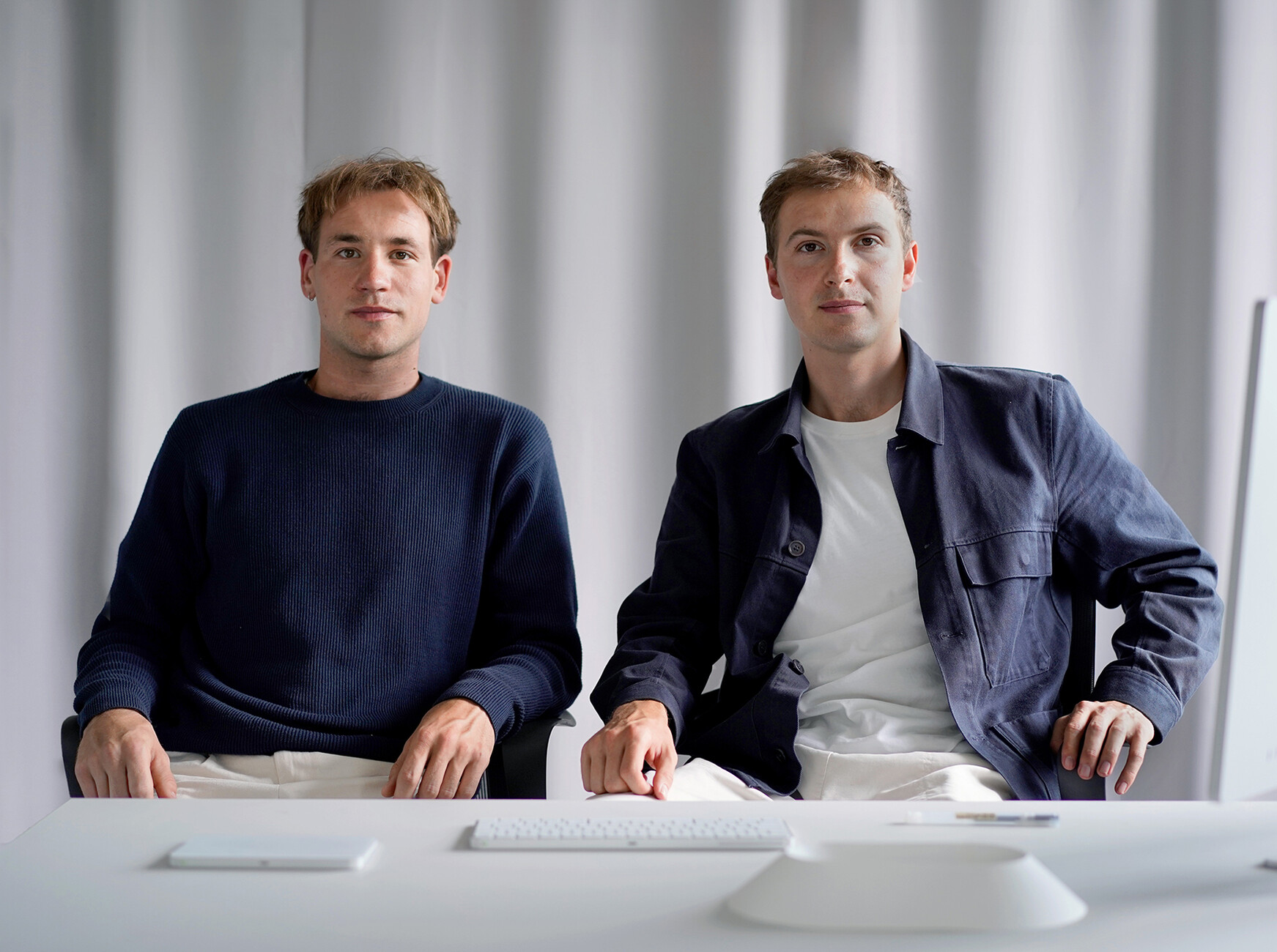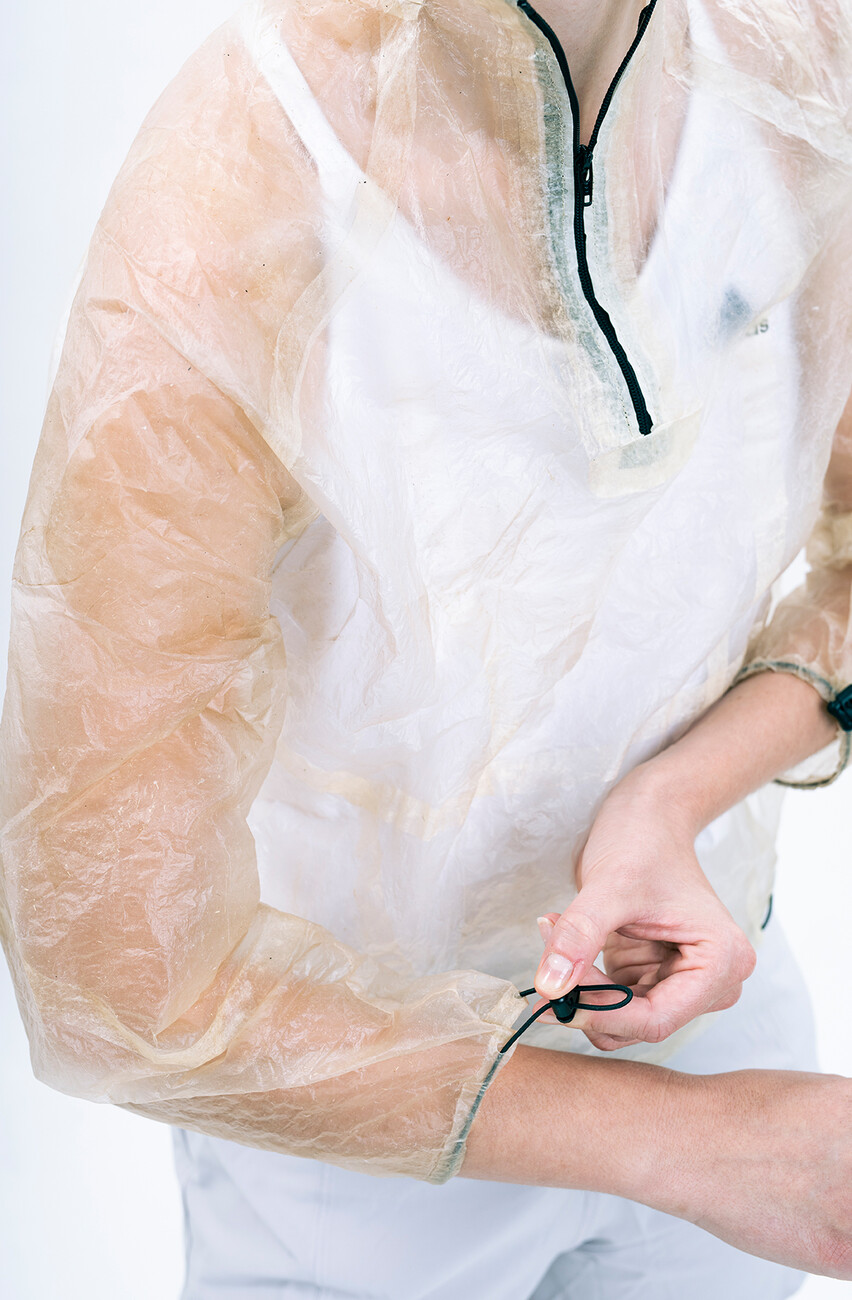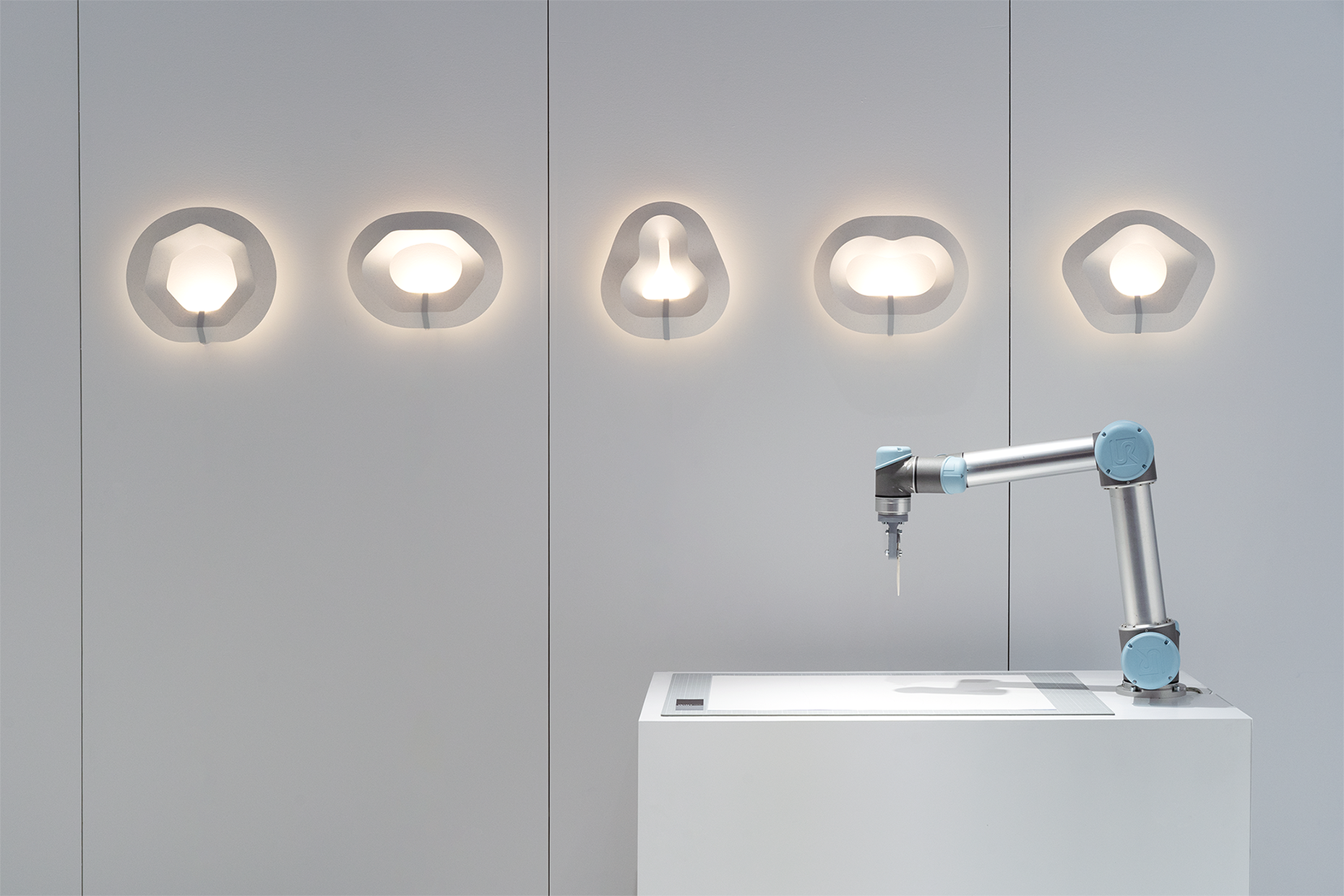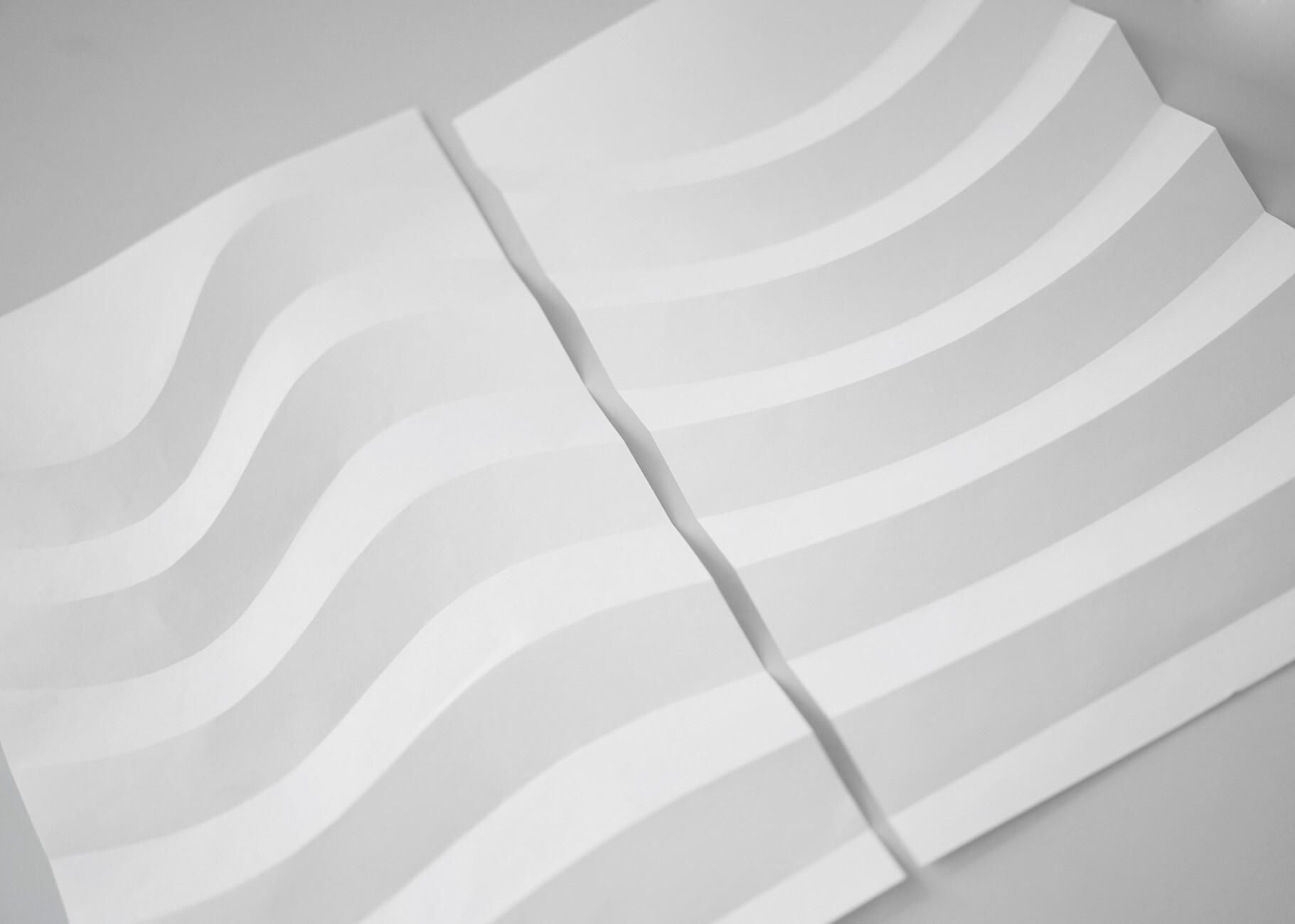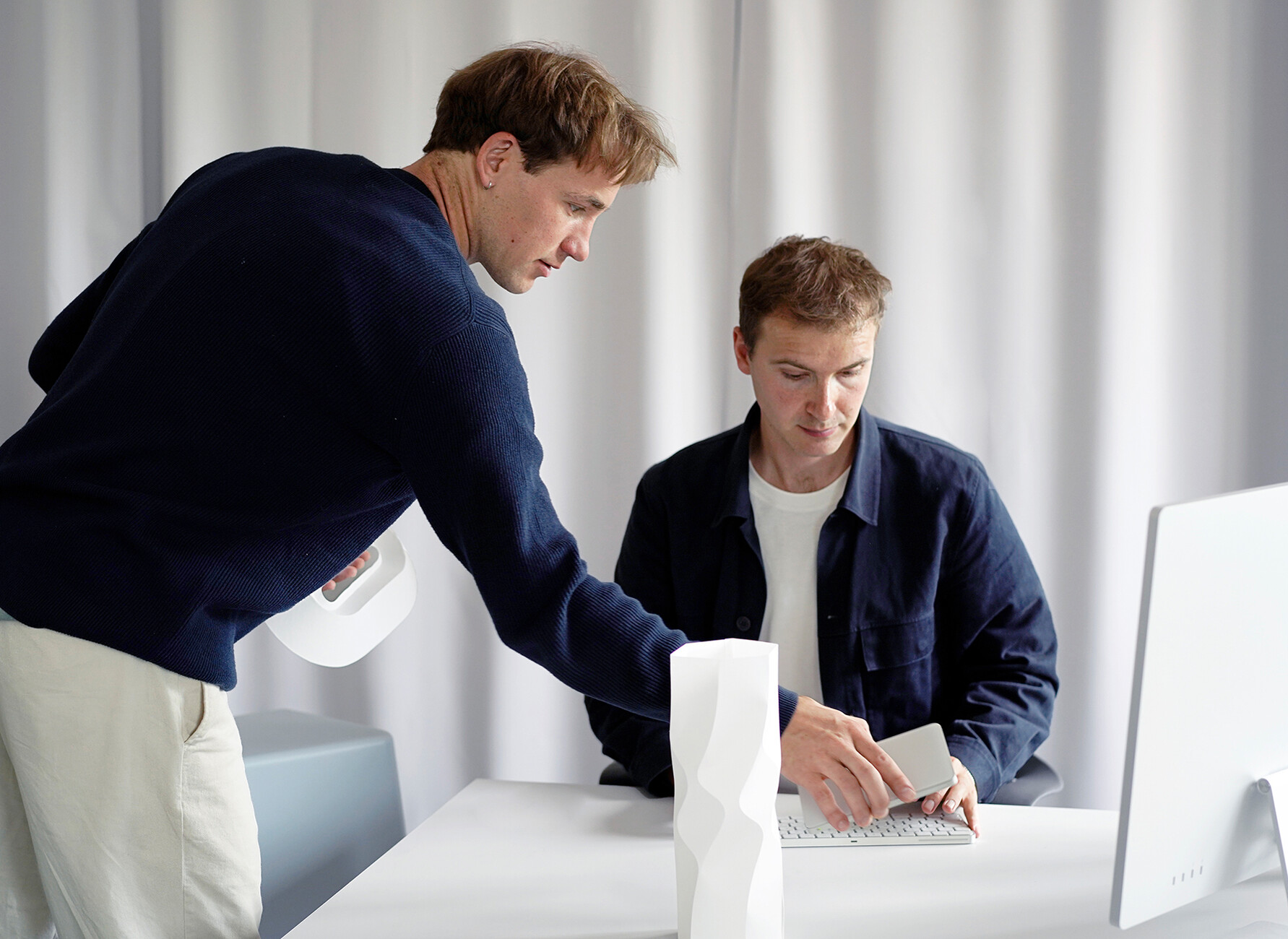Young Talents
Building Bridges
Anna Moldenhauer: Part of your work is participating in research projects. How do they come about?
Felix Rasehorn: So far most of the projects have arisen within Berlin’s creative network and involve collaborating with people who have totally different skills to ours but share similar interests – they might say be biochemists. We also swap ideas with firms conducting research projects who are networked with universities. You might say we serve as the bridge linking research work and projects.
Robin Hoske: Added to which, we have always been very proactive, whether within the context of the “Matters of Activity” research cluster that Felix is involved in or in the field of sustainable design at IZM, the Fraunhofer Institute for Reliability and Microintegration, where I work. There is design potential in many research projects, potential to link the sciences and design, and this is what we set out to identify. Our aim is to do more than simply realize a project for our portfolio; we want to highlight the technical process and how the design scenarios play out in reality.
One of your areas of research is design’s ecological and technical responsibility. What exactly does that mean?
Robin Hoske: We are a very technologically optimistic studio; we identify potential in new technologies for responsible action, for example, or for a more efficient use of resources. We are always concerned with optimization in the planetary sense, in other words, with sustainability and social responsibility. We would like to present a vision and highlight the positive potentials.
Why is it important to involve designers at a very early stage in scientific processes?
Felix Rasehorn: Designers can lend a new direction to the development of a technology; they see the issues through a different filter. We believe it helps both sides to be able to better evaluate the benefits and risks of a new technology from the outset.
This interdisciplinary collaboration also makes it easier to get across to people that designers are not only responsible for what the final product looks like. As you see it, is there a sector, medicine for example, where the potential design has for optimizing products and processes is still not sufficiently recognized?
Felix Rasehorn: We have realized several projects in the field of medicine. My experience has been that there is certainly the willingness to collaborate. If innovative potential goes untapped then that has to do with the reality in the medical profession, where is hardly any scope for experimentation.
Robin Hoske: In my view this reluctance to experiment is something you find across all sectors and is more of a German problem. We are very function-driven in Germany. Any potential for experimentation is destroyed by DIN standards. Many people can’t conceive of even starting out on a project if you aren’t able to clearly formulate the result up front. We do sometimes really have to wrestle with reservations like this. By contrast, I was pleasantly surprised by the attitudes in the textile industry, where many players are very open to change, have recognized the problem, and are already working on improving their material cycles.
Felix Rasehorn: Often there is too great an obstacle to implementing something, for example when it comes to forging a link between the digital level, the forest, and the eco-system. Projects like this operate in annual cycles from the concept to implementation and as a small studio we come up against our own limitations both as regards capacity but also in terms of content. The slower the cycle from first idea to final realization the more difficult it is to put new ideas into practice.
In such cases it would be handy if firms had a design team to whom you could pass on the concept for them to advance. You also had many exciting projects in the field of textiles more recently, such as an outdoor textile based on collagen or a digital ultrasonic welding technique for airtight or waterproof textiles. How do you select your projects, are you guided by your own areas of expertise?
Felix Rasehorn: I would argue that our own focal areas can be found in all our projects and have had an impact over time. From the very start we have been interested in technologies and their potential. So, over the years the experience we have gained through cooperation with various scientific disciplines has become a kind of solid foundation. We greatly value projects that bring us closer to achieving ecological goals. Each time we ensure that stakeholder mapping and a sustainability strategy are integral parts of a project. We are also keen to incorporate current scientific issues into these projects. We seek to build bridges between science and product design. That is always a core component of all our projects.
In what field are you currently working with artificial intelligence?
Robin Hoske: We currently have a guest professorship at HBK Saar and there we are busy, for example, integrating AI into the design process. Our aim was to help students generate visions from relatively complex, ecological sustainability goals and iterate these further. To this end we collaborated with Midjourney, for example, to swiftly alter prototype developments. We also work with it at times in our own design work. We find it important that AI is primarily used to create the right images for the project content. It’s interesting for us to see how normal it is for student to embark on the design process, their approach is totally different to that of our own generation, which wasn’t trained to use these AI-based tools. And simultaneously we help them not fall into the trap of making their designs too expressive with AI. If that does happen it tends not to be feasible and the design is overloaded with too much detail from the AI. The more abstract your starting point, the easier it is to advance a typology using AI – this was also a finding from our work with the students.
For you in your capacity as teachers what is it you especially want to convey to the upcoming generation?
Robin Hoske: To handle technology responsibly. Weighing up what the benefits of projects are. Not simply using a technology because it’s new, but because it can produce a real difference. And not to forget the important role design has alongside technology, the actual physical work. Technology is intended to be a tool for the design but shouldn’t distract from it. We might have access to artificial intelligence but paper and pen still remain important design tools. Moreover, we also always think it’s important that students understand in what context they are designing, what scope they have. As a designer you have to position yourself in the possible futures despite all the complexity. You have to convey where you want your own design to lead and must explore how to formulate a blueprint for it.
There is no hint either in your name or in your work of studio design. The term “Lab” allows for a fairly wide interpretation of your work. What was the idea behind that?
Felix Rasehorn: We deliberately left it open because we collaborate with many different people with whom we share a vision. What’s more, we didn’t want to restrict ourselves to “design” in our corporate identity but rather wanted to create space for working in many different topics. At the same time, via our work and the wording “design lab” we can also help define what a “design lab” actually is. It’s interesting to see how many different associations there are with this term.
Is there an area you would like to completely overhaul?
Felix Rasehorn: We are very interested in the topic of autonomous energy generation – how can we network the objects we use on a daily basis which already have built-in batteries with one another? How can one learn from other cultures how to work efficiently with little energy?
Robin Hoske: Typically, our projects have a multistakeholder-level, affect various levels of the infrastructure from individual households through to a city or region. In the past we have often conducted research in collaboration with the Fraunhofer Institute on citizen science projects and looked into how systems can be combined more effectively and you can exploit this combined strength to achieve improvements. Individual areas are also fascinating – like electronic devices. Normally, we progress from the large scale to the small scale. It would be brilliant if our collaboration with a manufacturer of electronic articles were to produce a new vision.
Your work is very strongly connected to improving everyday life and the way the system operates, to social and economic advances. Yet people not involved in the sector tend to associate design more with consumer goods. Why do you think that so often there is a failure to appreciate the great importance design has for our lives?
Felix Rasehorn: The number of people applying to study industrial design in Germany is actually on the decline; that’s even the case in Europe. It woudn’t be an exaggeration to say that design is in something of a communication crisis right now. Everyone in the design business realizes that it’s all down to innovation and new products, sustainability and issues that are closely connected to our everyday lives. Sometimes it’s just a matter of getting the right wording: Our experience is that people who would be perfectly suited to studying product or industrial design suddenly show an interest in another course of study because the course title contains phrases like “sustainable innovation”. That’s why we try to be as clear as possible when describing our design services so that people understand our remit.
Robin Hoske: We are also interested in other contexts and want to create synergies. That’s why we opted for a studio at Tegel Airport – we work from one of the first buildings occupied by sustainable start-ups and are the only design studio. When you work door to door with other disciplines or visit technical fairs on a regular basis there is an automatic exchange of ideas. That said, as yet design doesn’t play a role as a driver for new projects or budgets that might perhaps be revised. I don’t think it’s only a matter of designers not communicating their skills well enough; there is also lack of openness on the other side. Designers are interested in lab residencies, but equally there’s a need for studio-residencies for scientists looking to gain an entry into design. If interdisciplinary work is to succeed then players from all sectors need to be prepared to take a back seat now and then.
What are you currently working on?
Felix Rasehorn: We are doing research into a robotic arm that we use to cut and fold paper. It allows us to automate paper processing that would normally be done by hand and can be used to test production on demand, say for lampshades. We already showcased the robotically sculpted paper at the Rising Talent Award 2024 at the Maison&Objet in Paris. People in the paper industry are very open to innovations and re-thinking mass products with a view to having a big impact with a small amount of material.
